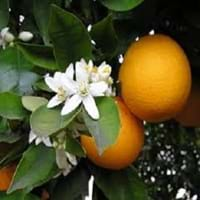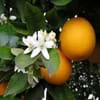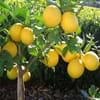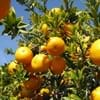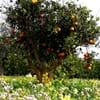Life Span
Annual
Perennial
Origin
Southeastern Asia, China
Hybrid origin
Types
Castellana
Joppa
Mosambi
Narinja
Verna
Aristocrat, Buckeye Belle, Henry Bockstoce , Abalone Pearl, Coral Supreme, Cytherea, Charlie's White
Habitat
Farms, Warmer regions
Hillside, Woods
USDA Hardiness Zone
9-11
Not Available
Sunset Zone
H1, H2, 8, 9, 12, 13, 14, 15, 16, 17, 18, 19, 20, 21, 22, 23, 24
Not Available
Habit
Oval or Rounded
Clump-Forming
Flower Color
White
Not Available
Flower Color Modifier
Bicolor
Bicolor
Fruit Color
Red, Orange, Orange Red
Not Available
Leaf Color in Spring
Dark Green
Not Available
Leaf Color in Summer
Dark Green
Not Available
Leaf Color in Fall
Dark Green
Not Available
Leaf Color in Winter
Light Green
Light Green
Leaf Shape
Ovate
Compound
Plant Season
Spring, Summer, Fall, Winter
Spring, Summer
Sunlight
Full Sun
Full Sun, Partial Sun, Partial shade
Type of Soil
Loam, Sand
Clay, Loam
The pH of Soil
Acidic, Neutral
Acidic, Neutral, Alkaline
Soil Drainage
Well drained
Average
Bloom Time
Early Spring, Spring, Late Winter, Indeterminate
Not Available
Tolerances
Drought
Drought
Where to Plant?
Ground
Ground, Pot
How to Plant?
Seedlings
Grafting, Seedlings, Stem Planting, Transplanting
Plant Maintenance
Medium
Medium
Watering Requirements
Do not water frequently, Requires watering in the growing season, Water every two or three days during warmer months
Does not require lot of watering, It cannot sustain wet-feet, Keep the ground moist but not water-logged, Needs watering once a week, Prefer drip-irrigation instead of Over-head watering, Water occasionally
In Summer
Lots of watering
Lots of watering
In Spring
Moderate
Moderate
In Winter
Average Water
Average Water
Soil pH
Acidic, Neutral
Acidic, Neutral, Alkaline
Soil Type
Loam, Sand
Clay, Loam
Soil Drainage Capacity
Well drained
Average
Sun Exposure
Full Sun
Full Sun, Partial Sun, Partial shade
Pruning
Remove damaged leaves, Remove dead branches, Remove dead leaves
Do not prune during shooting season, Prune to control growth, Remove dead or diseased plant parts, Remove deadheads
Fertilizers
All-Purpose Liquid Fertilizer
All-Purpose Liquid Fertilizer
Pests and Diseases
Red blotch
Botrytis Blight, Leaf spot, Stem spot, Viruses
Plant Tolerance
Drought
Drought
Flower Petal Number
Single
Not Available
Foliage Texture
Medium
Not Available
Foliage Sheen
Glossy
Not Available
Attracts
Birds, Butterflies
Ants
Allergy
no allergic reactions
Not Available
Aesthetic Uses
Not Used For Aesthetic Purpose
Beautification, Bouquets, Showy Purposes, Used for decorating walls, fences, gates, hedges, etc.
Beauty Benefits
Not Available
Not Available
Environmental Uses
Air purification
Air purification
Medicinal Uses
Not Available
Cough, Gout, Headache, Heartburn, Kidney problems, Upset stomach, Urinary tract problems
Part of Plant Used
Fruits
Flowers, Root, Seeds
Other Uses
Cosmetics, Culinary use
Showy Purposes, Used as Ornamental plant, Used for fragrance
Used As Indoor Plant
No
No
Used As Outdoor Plant
Yes
Yes
Garden Design
Container, Edible, Feature Plant, Fruit / Fruit Tree, Hedges, Mixed Border, Screening / Wind Break, Topiary / Bonsai / Espalier, Tropical
Cutflower, Feature Plant, Foundation, Mixed Border
Botanical Name
CITRUS sinensis 'Budd'
PAEONIA 'Rachel'
Common Name
Orange
Intersectional Peony
In Hindi
नारंगी
Intersectional Peony
In German
Orange
Intersectional Pfingstrose
In French
Orange
intersectionnelle Pivoine
In Spanish
naranja
interseccional Peony
In Greek
Πορτοκάλι
διατομεακές Παιώνια
In Portuguese
laranja
interseccional Peony
In Polish
Pomarańczowy
międzysegmentowe Piwonia
In Latin
aurantiaco
Intersectional AGLAOPHOTIS
Phylum
Magnoliophyta
Tracheophyta
Class
Magnoliopsida
Magnoliopsida
Order
Sapindales
Saxifragales
Family
Rutaceae
Paeoniaceae
Clade
Angiosperms, Eudicots, Rosids
Angiosperms, Core eudicots, Eudicots
Tribe
Citreae
Not Available
Subfamily
Aurantioideae
Not Available
Number of Species
Not Available
Season and Care of Orange and Intersectional Peony
Season and care of Orange and Intersectional Peony is important to know. While considering everything about Orange and Intersectional Peony Care, growing season is an essential factor. Orange season is Spring, Summer, Fall and Winter and Intersectional Peony season is Spring, Summer, Fall and Winter. The type of soil for Orange is Loam, Sand and for Intersectional Peony is Clay, Loam while the PH of soil for Orange is Acidic, Neutral and for Intersectional Peony is Acidic, Neutral, Alkaline.
Orange and Intersectional Peony Physical Information
Orange and Intersectional Peony physical information is very important for comparison. Orange height is 180.00 cm and width 180.00 cm whereas Intersectional Peony height is 71.10 cm and width 60.00 cm. The color specification of Orange and Intersectional Peony are as follows:
Orange flower color: White
Orange leaf color: Dark Green
Intersectional Peony flower color: Not Available
- Intersectional Peony leaf color: Not Available
Care of Orange and Intersectional Peony
Care of Orange and Intersectional Peony include pruning, fertilizers, watering etc. Orange pruning is done Remove damaged leaves, Remove dead branches and Remove dead leaves and Intersectional Peony pruning is done Do not prune during shooting season, Prune to control growth, Remove dead or diseased plant parts and Remove deadheads. In summer Orange needs Lots of watering and in winter, it needs Average Water. Whereas, in summer Intersectional Peony needs Lots of watering and in winter, it needs Average Water.
